Hiking Santa Cruz Island
Summer on Santa Cruz Island
Photos by Nico Ali and Nicholas WeissmanOff the coast of Southern California lies an eight-island archipelago called the Channel Islands. Five are owned at least in part by the National Park Service. We grabbed some pals and headed out to Santa Cruz — the most visitor-friendly of the islands — to hike and explore.
CHANNEL ISLANDS HARBOR
GETTING THERE
The easiest way to Santa Cruz is through Island Packers, the official park concessionaire for the Channel Islands. Because we had little ones in tow, we went with a simple Scorpion Anchorage self-guided day trip, but you can choose between any of the five NPS-owned islands, add a kayaking or snorkeling package, or even camp overnight.
SADIE SEQUOIA PENNY-ALI, FIRST TIME ON A BOAT
Whatever you decide to do, plan ahead thoroughly. If you want to camp, you’ll need to reserve a site in advance. There are only a couple of sources of potable water across all islands. One of these is around the vicinity of Scorpion Cove.
NPS has an app that can help you prepare for your trip and Island Packers has tons of useful information on their site.
NPS and The Nature Conservancy are taking great pains to restore the ecosystem of Santa Cruz Island, so before you get on the boat, make sure your shoes are free of any hitchhiking bugs, seeds, or dirt. Pets, of course, are not allowed on the island and there is a strict pack it in / pack it out rule.
HIKING
A day trip to Scorpion Cove is only about eight hours which is plenty of time to take the five-mile Potato Harbor / Cavern Point loop or just enough time for the eight miles out and back to Smuggler’s Cove. It’s a steep switchback climb up the first stretch, but the reward is a gorgeous view of the mainland across twenty miles of ocean.
Because we were there on an unusually hot day and had the kiddos, we bailed at the top of the hill and took the Scorpion Canyon trail back.
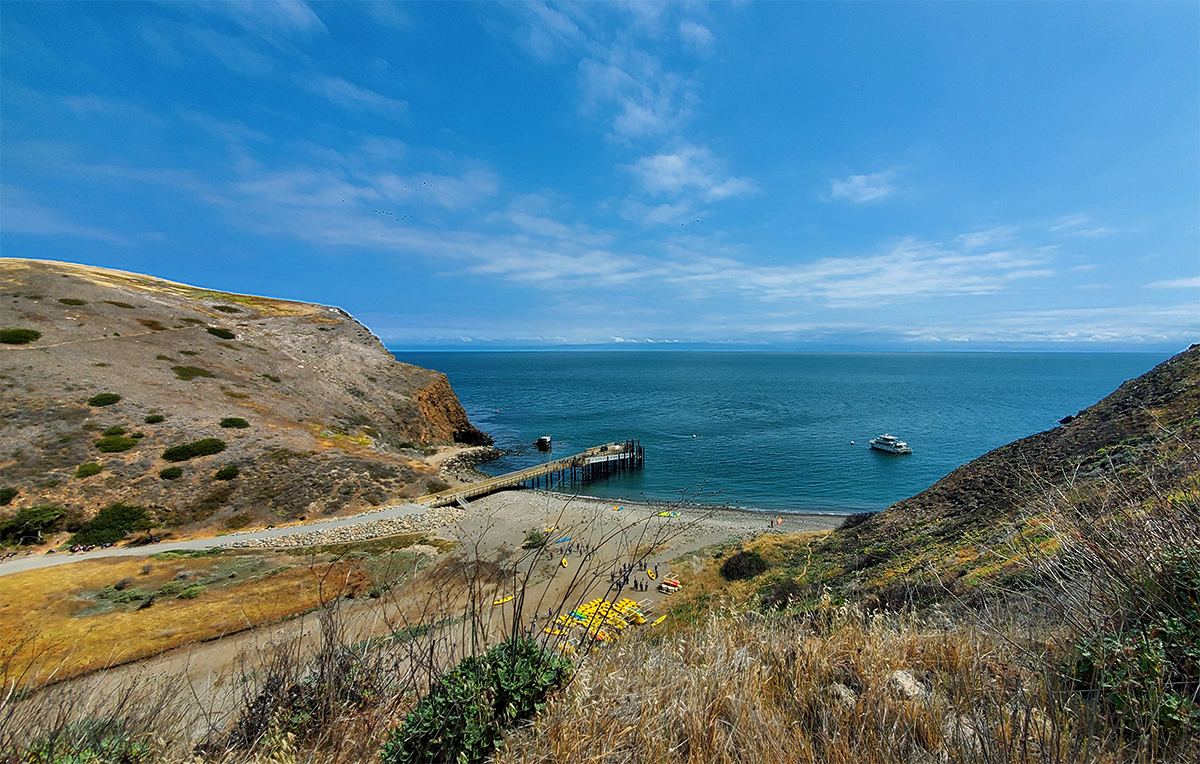
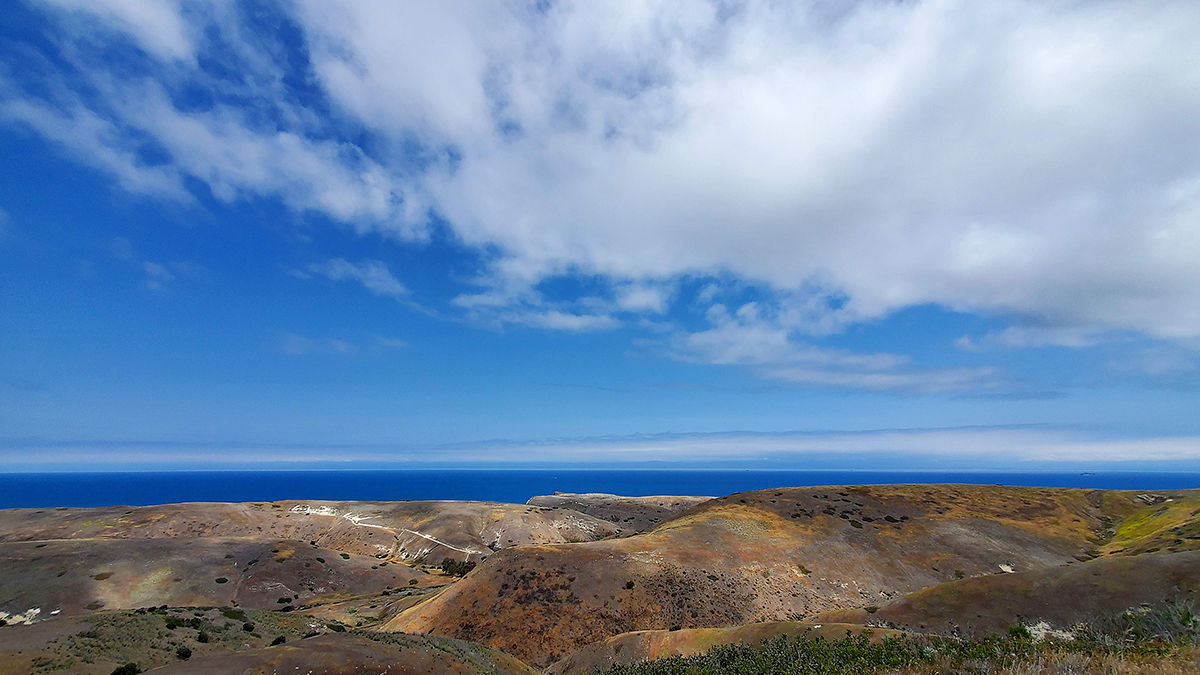
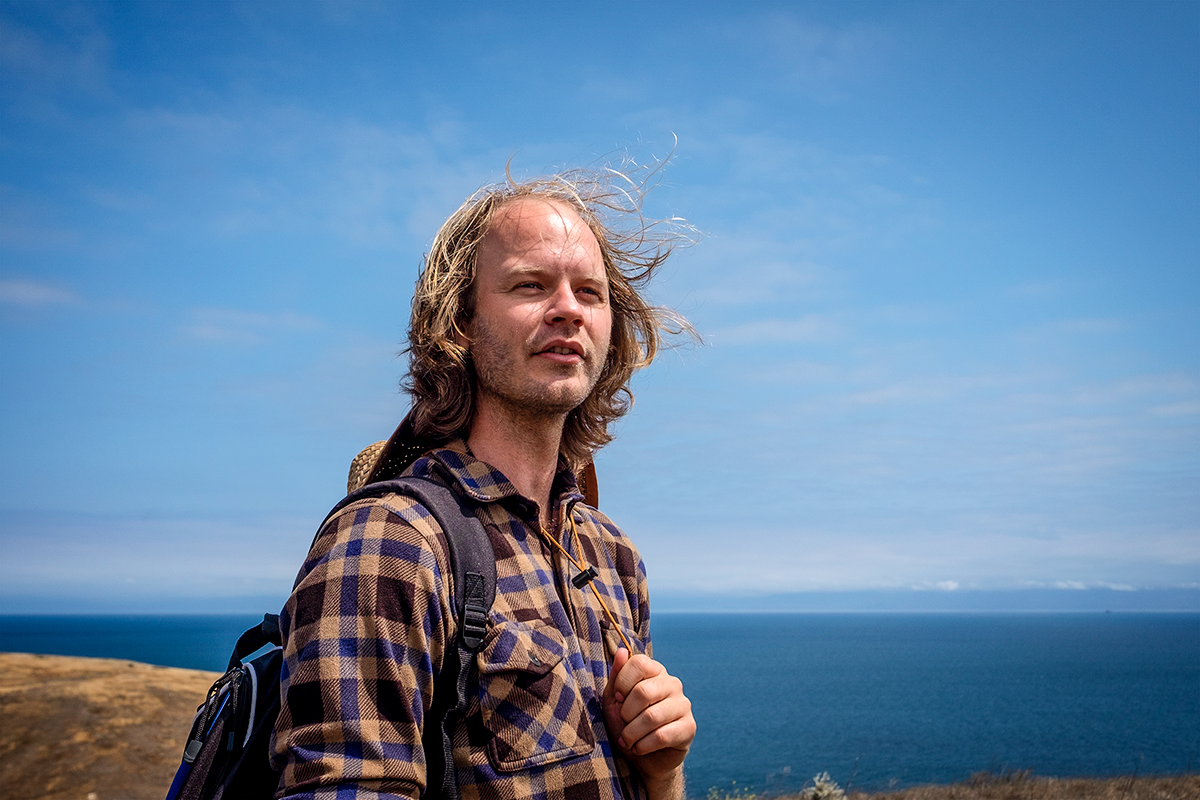
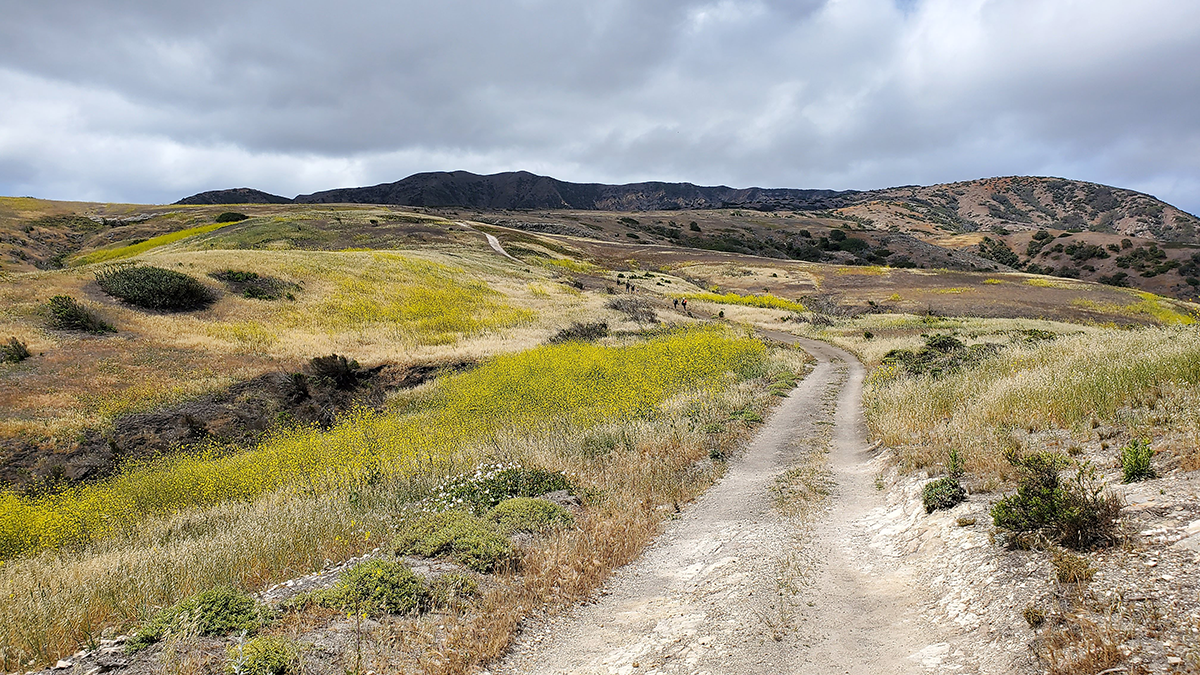
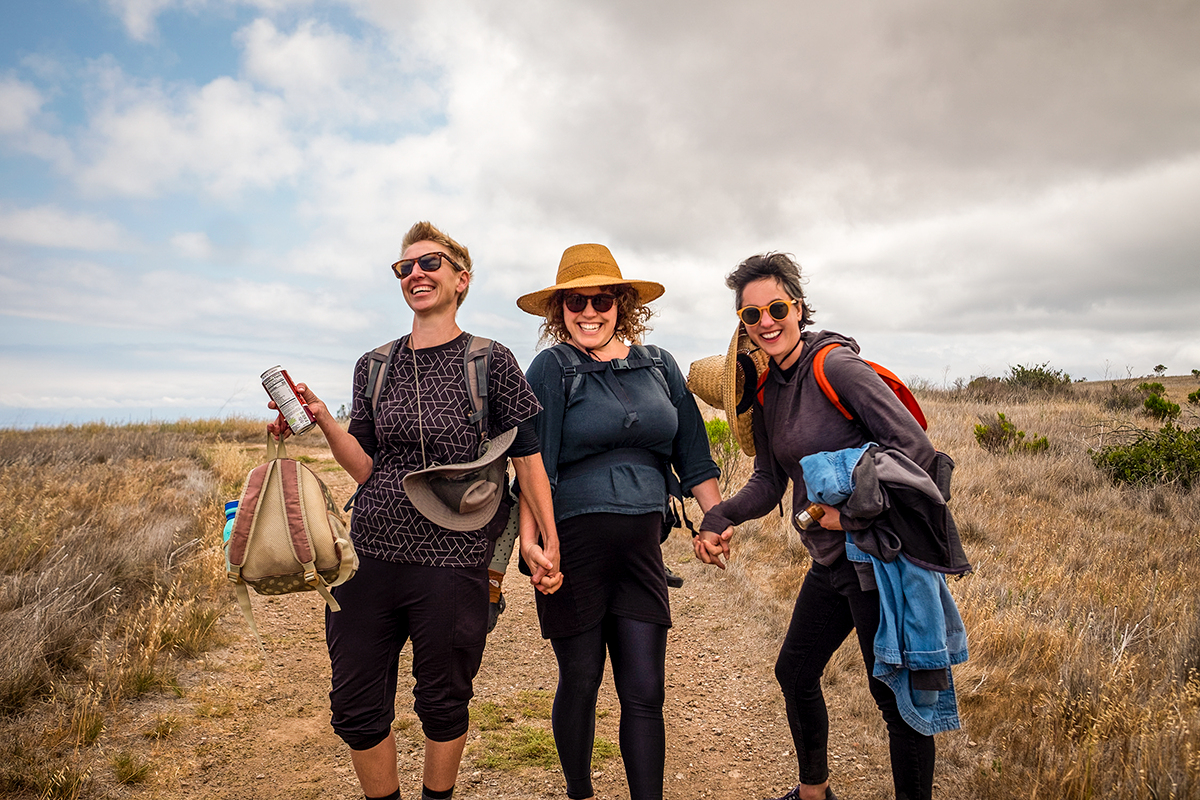
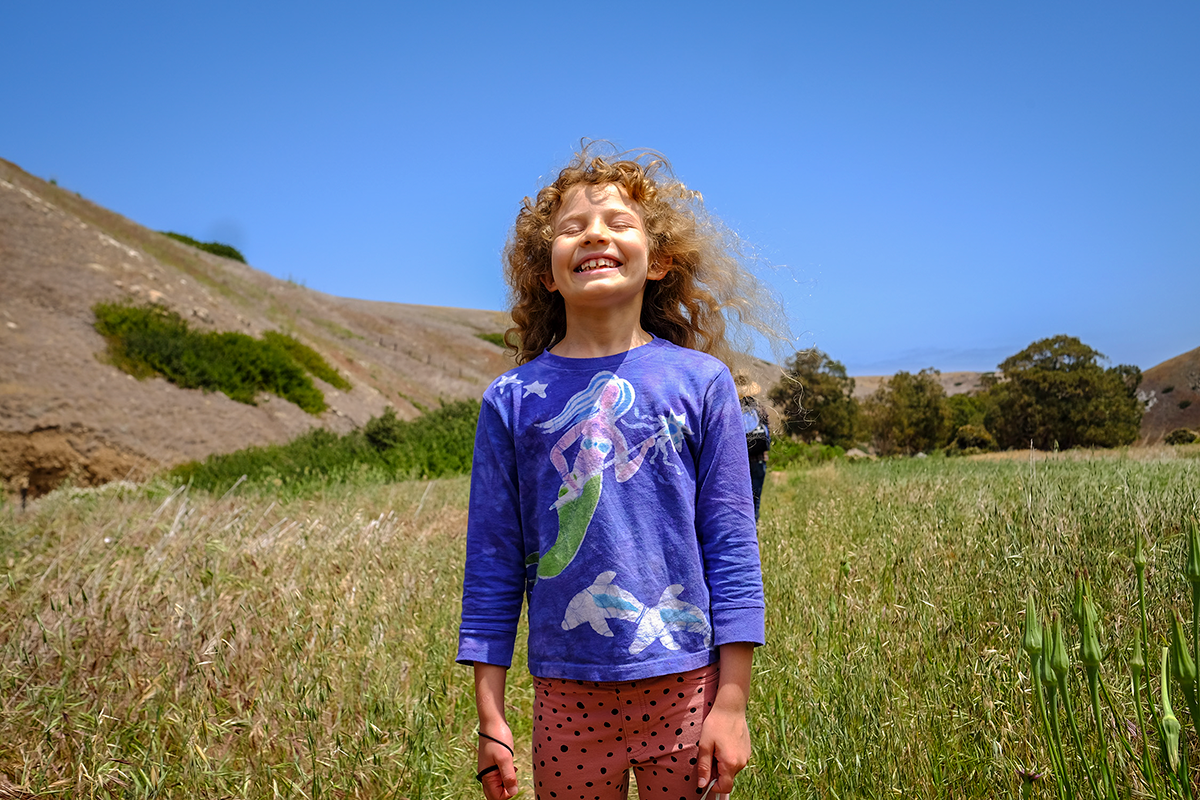
BRIGHT ORANGE LICHENS ADORN A BOULDER ON SMUGGLER’S ROAD
PLANTLIFE
Santa Cruz Island specifically most resembles the pre-colonial Southern California Coast.
I had heard about the interesting endemic plant species on the islands and though I’m not sure we spotted any, almost every plant apart from the grasses and eucalyptus looked new to me. Even the invasive asters were unlike any I’d ever seen — enormous, with huskier parachute seeds.
For dramatic blooms, we’ll have to return in springtime.
SALSIFY, AN INVASIVE PLANT NATIVE TO EUROPE
WILDLIFE
ISLAND FOX
The star of the islands is a species of fox about the size of a housecat. Spend a day and you are bound to see one. They have little fear of humans and are absolutely adorable.
It is very important to keep food away from these charming and cunning creatures. Campsites and picnic areas have big, metal fox boxes for this purpose.
The ravens, too, have learned clever tricks — like pulling open pack zippers and will sometimes team up with the foxes to steal your sandwiches. Beware!
CAMPING / PICNICKING
We stopped for lunch at the Scorpion Campground, nestled in a grove of eucalyptus leftover from one of the island’s past lives. Naps were enjoyed, water bottles refilled, and clean restrooms appreciated.
A EUCALYPTUS STAND SERVES AS PICNIC SPOT, CAMPGROUND, AND REST AREA
NICHOLAS WEISSMAN, RESTING?
BEACH
Our shortcut got us back to Scorpion Beach with plenty of time to take a swim, poke around, scope seals, and pick rocks. The rocks, by the way, are incredibly cool and very much off-limits to take home. There are several kinds of biologic, silica-based sedimentary rock called chert that served as tool-stone stock for the Chumash in another of the Islands’ past lives. To picture it, flint is a sort of chert. Jasper is chert. I cannot tell you how much self-control I had to exert not to take the chert!
YOU ROCK, ROCK
FANNY, NICO, AND BABY GITA
A trip to Santa Cruz Island is a lovely, family-friendly escape for the day and I enjoyed the little nibble we took of the adventures lying just off our coast, which we washed down with a cold beer on the boat ride home. It was both easier to get to and more interesting than I expected. Plus, an escape to a cooler climate is well worth it. I look forward to further exploration.
‘TIL NEXT TIME!
CALIFORNIA 101
The California tourism bureau hired Nicholas Weissman’s company, Vacationland Studio, to create a series of several videos all around California.
Additional Photography by Michael Kitchen, Nikolay Tchaouchev, and Jules Weissman
















